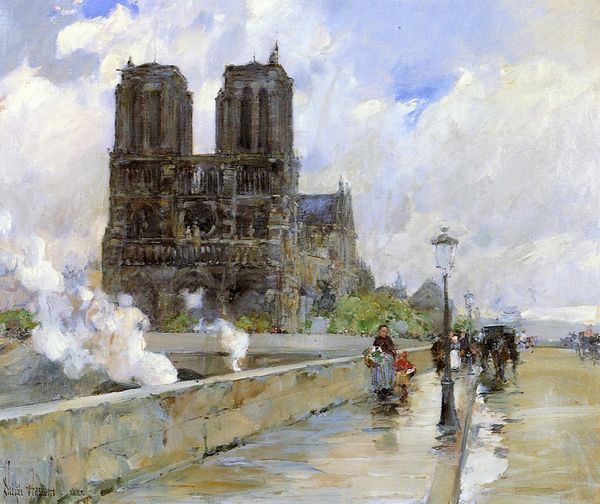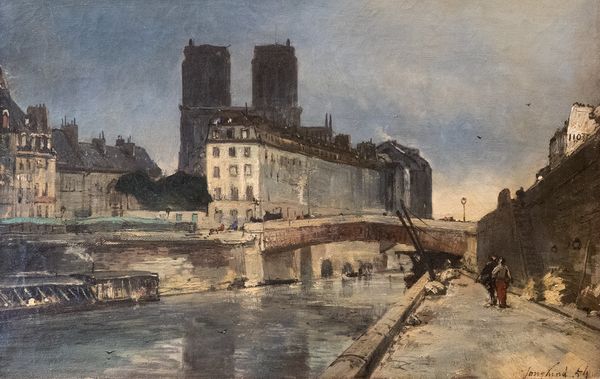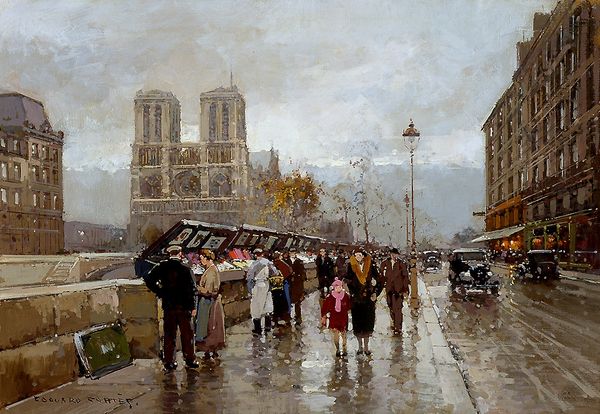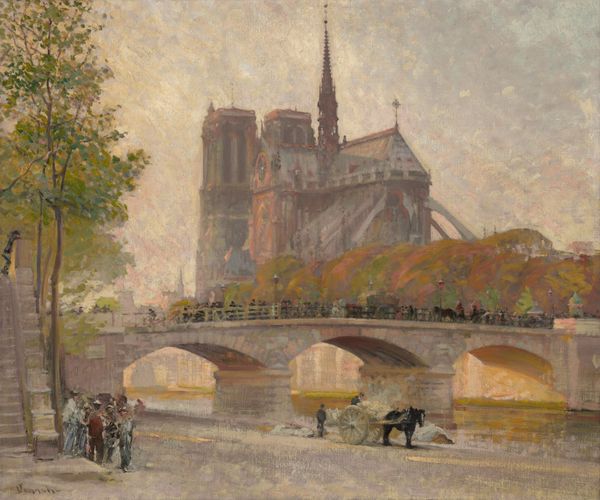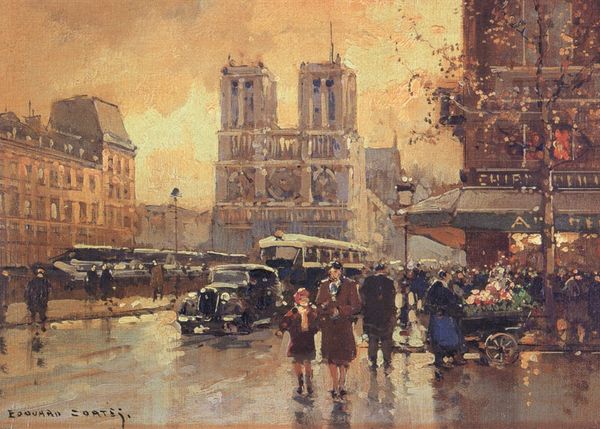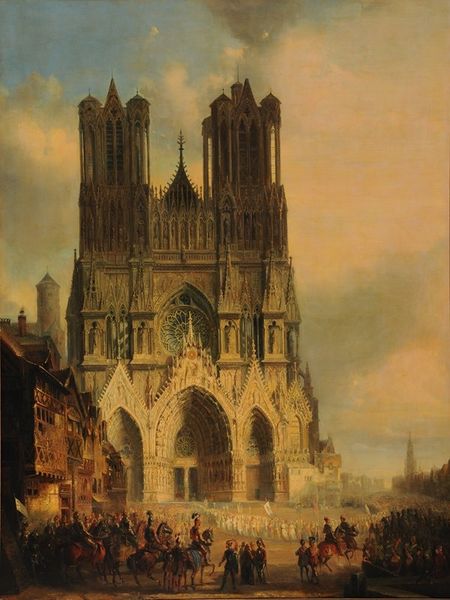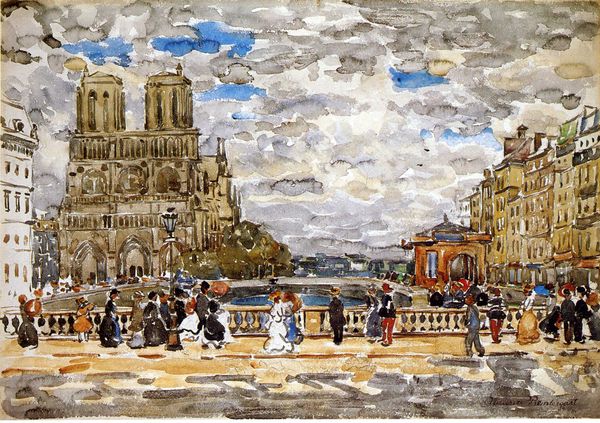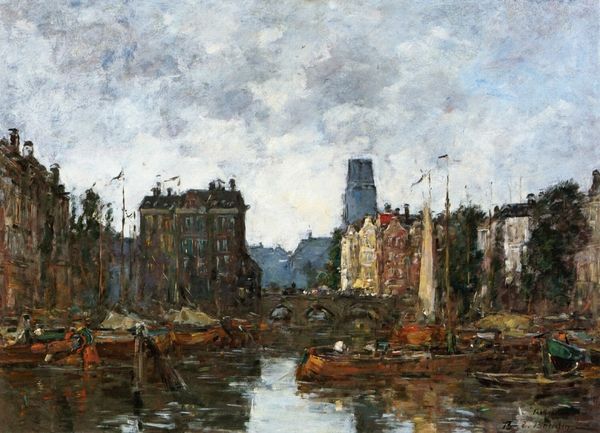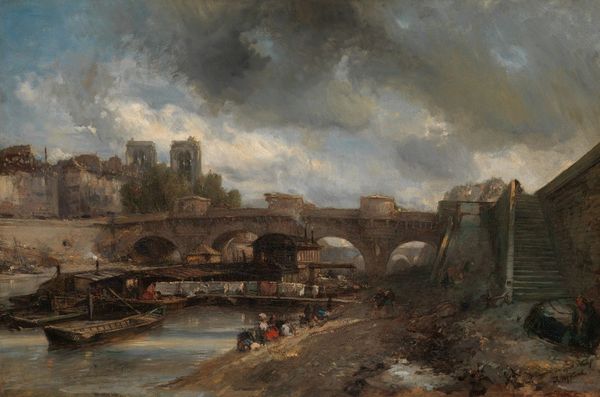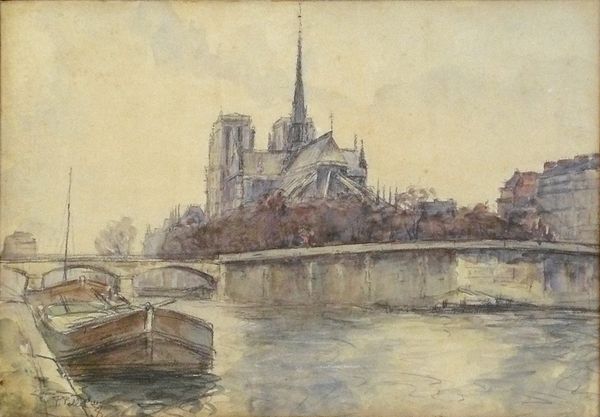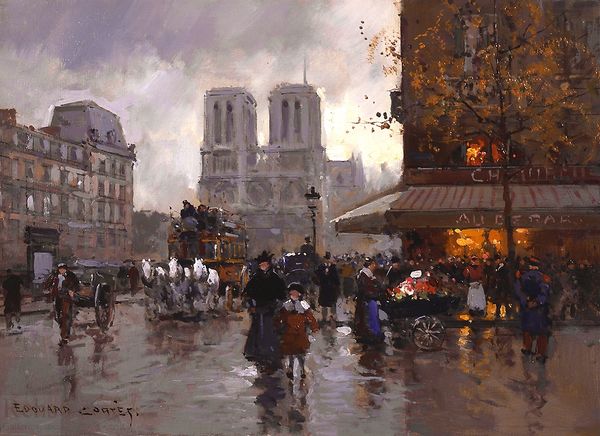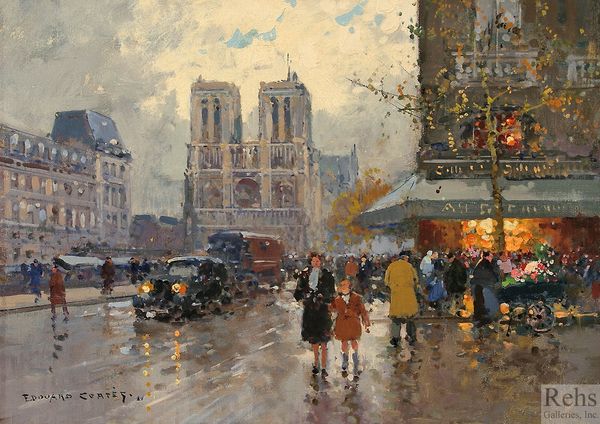
Copyright: Public Domain: Artvee
Editor: Here we have Jongkind's "Notre-Dame vue du quai de la Tournelle," painted in 1852, using oil on canvas. It strikes me as quite gray, almost monochromatic, yet with incredible detail in the stonework. What do you see in this piece? Curator: Beyond the immediate depiction of Notre Dame, I see a deliberate portrayal of labor and materiality. Notice how the artist meticulously renders not just the cathedral, but also the raw materials—the piles of stone, the carts, and the workers shaping the quai. It draws attention to the very physical effort that underpins the construction and maintenance of the city. Editor: So, you’re saying the artist is highlighting the labor involved in creating the iconic cityscape? Curator: Precisely. Jongkind shifts our focus from the finished monument to the process of its creation, the materials at hand, and the social dynamics of production. Who were these laborers? How were they compensated? How does this scene of construction intersect with the cathedral's symbolic and economic power? Editor: It's easy to overlook the workers, focusing solely on the cathedral. Are you suggesting Jongkind intended to equalize the importance of the sacred and the profane? Curator: Not equalize, perhaps, but intertwine. He compels us to acknowledge the inseparable link between high culture and the often-invisible labor upon which it rests. By showing us the means of production, Jongkind subtly questions traditional art historical hierarchies that valorize the 'masterpiece' while ignoring the material conditions of its creation. Editor: I never thought about it that way. It makes me appreciate the artwork and its social context much more deeply. Curator: Exactly. Hopefully, considering these elements changes how you look at art going forward.
Comments
No comments
Be the first to comment and join the conversation on the ultimate creative platform.
